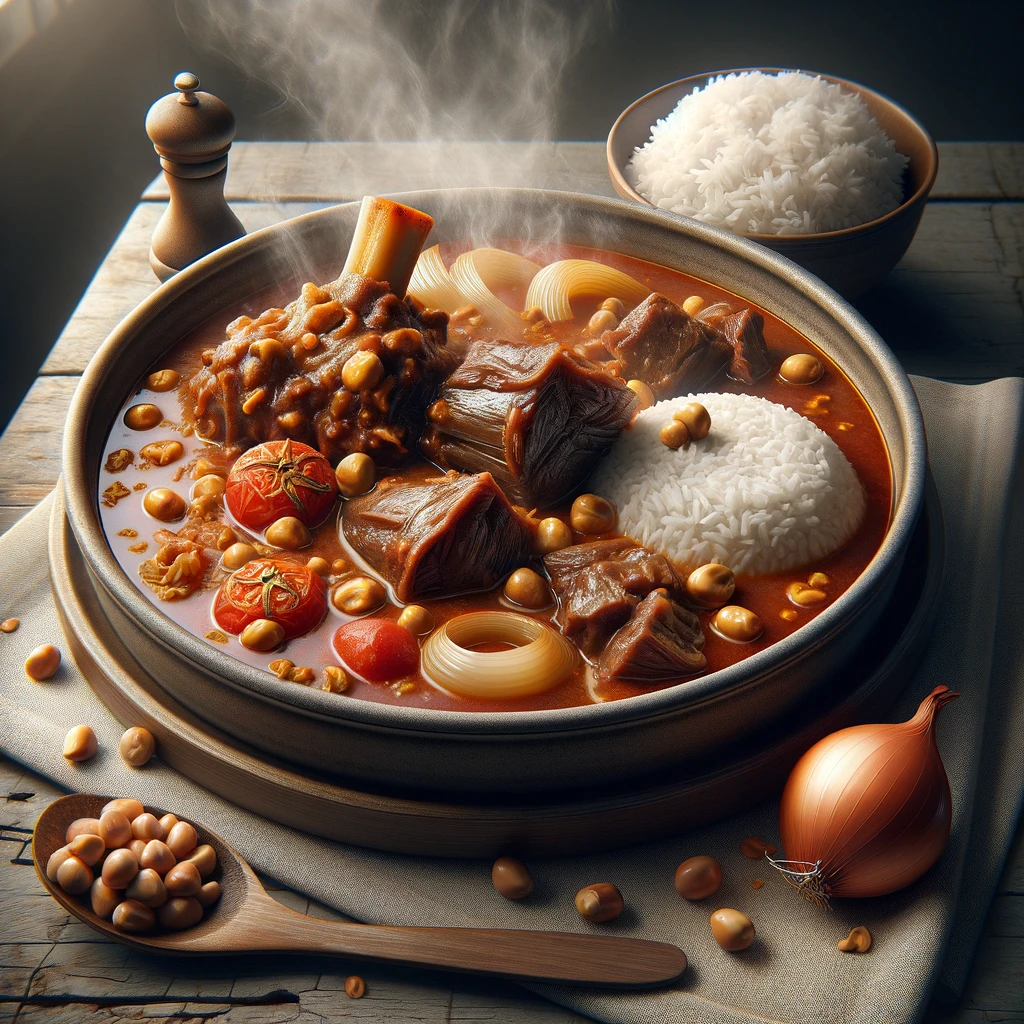Introduction
Welcome to another culinary adventure as we delve into the enchanting world of Filipino cuisine.
Today, we’re uncovering the secrets of Balbacua, a hearty and aromatic stew that’s been warming the hearts and filling the bellies of Filipinos for generations.
Join us as we explore the history, ingredients, and step-by-step instructions to create this delightful dish that’s perfect for gatherings and cozy family meals.
Balbacua: A Taste of Filipino Heritage
Balbacua’s origins are deeply rooted in the Philippines’ diverse culinary heritage.
This beloved stew is a reflection of the country’s rich history, blending indigenous ingredients with Spanish influences. Traditionally prepared with beef shank, oxtail, and pork hock, Balbacua showcases the depth of flavors and textures that characterize Filipino cooking.
Balbacua is a traditional Filipino stew known for its rich, thick, and hearty flavor. It’s a popular dish in the Philippines, especially in the Visayan region.
The stew is made primarily from beef skin, oxtail, and sometimes includes beef shank. These ingredients are slow-cooked for several hours until they become gelatinous and tender, contributing to the stew’s unique texture.
The base of the balbacua often includes a blend of onions, garlic, and tomatoes, along with a variety of spices. Commonly, it’s flavored with peanuts or peanut butter, giving it a creamy texture and rich taste.
Other ingredients like annatto seeds may be added for color, and occasionally, vegetables like eggplants or banana blossoms are included.
Balbacua is traditionally served over rice and is particularly popular as a comfort food during colder months or as a hearty meal after a long day. It’s also a common offering at festivities and gatherings, embodying a sense of communal eating and sharing.
Ingredients: A Symphony of Flavors
Before we dive into the cooking process, let’s take a closer look at the key ingredients that make Balbacua so extraordinary:
- Beef Shank: Adds a meaty and robust flavor to the stew.
- Oxtail: Provides gelatinous richness and a delightful chewiness.
- Pork Hock (Pata): Offers a tender and succulent element to the dish.
- Annatto Oil (Achuete Oil): Infuses a vibrant reddish hue and a mild nutty flavor.
- Peanut Butter: Gives the stew a creamy and slightly sweet undertone.
- Rice Flour: Used for thickening the broth, creating a velvety texture.
- Aromatics: Garlic, onions, bay leaves, and seasonings add depth and fragrance.

Cooking Balbacua: A Flavorful Odyssey
Now, let’s embark on the journey of creating Balbacua. Here’s a step-by-step guide:
- Prepare Annatto Oil: Start by steeping annatto seeds in hot water to create a striking red annatto oil.
- Saute Aromatics: In a large pot, sauté minced garlic and chopped onions until fragrant.
- Add Meats: Add the beef shank, oxtail, and pork hock to the pot and sear them until lightly browned.
- Incorporate Annatto Oil: Pour in the annatto oil, infusing the meats with a rich, reddish hue.
- Add Water: Cover the meats with water (about 10-12 cups), bring it to a boil, then simmer.
- Introduce Peanut Butter: Stir in peanut butter, ensuring it’s well mixed into the broth.
- Season and Simmer: Add bay leaves, season with salt and pepper, and simmer for 3-4 hours until meats are tender and the broth thickens.
- Thicken the Broth: Create a slurry with rice flour and water, gradually adding it to the stew while stirring.
- Garnish and Serve: Ladle the hot Balbacua into bowls, garnish with chopped green onions and fried garlic, and serve with steamed rice or puto.
You Can Also Check: Exploring the Flavorful Chicken Adobo: A Filipino Classic
Conclusion
Balbacua is more than just a stew; it’s a celebration of Filipino culinary heritage. Its complex flavors, rich history, and comforting warmth make it a cherished dish for gatherings and special occasions.
Whether you’re sharing it with loved ones or savoring it on a cozy evening, Balbacua is sure to transport your taste buds to the heart of the Philippines.
So, gather your ingredients, follow the steps, and embark on a flavorful journey with Balbacua. Happy cooking!
- Top Digital Nomad Cities in Latin America (2026 Edition) - 15 December 2025
- Top Digital Nomad Cities in Europe (2026 Edition) - 14 December 2025
- Top Digital Nomad Cities in Asia (2026 Edition) - 14 December 2025











